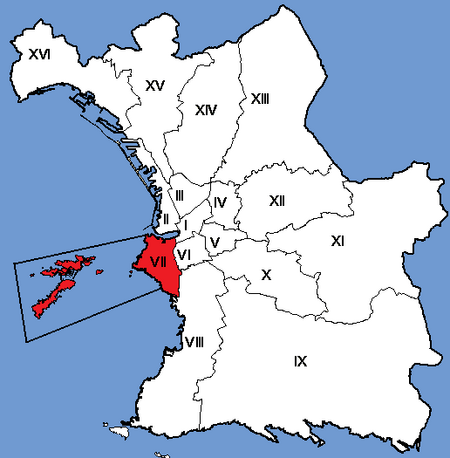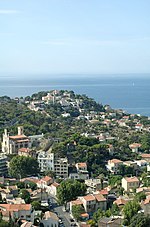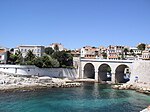7th arrondissement of Marseille
7th arrondissement of MarseilleArrondissements of MarseilleBouches-du-Rhône geography stubsPages with non-numeric formatnum arguments

The 7th arrondissement of Marseille is one of the 16 arrondissements of Marseille, France. It is governed locally together with the 1st arrondissement, with which it forms the 1st sector of Marseille.
Excerpt from the Wikipedia article 7th arrondissement of Marseille (License: CC BY-SA 3.0, Authors, Images).7th arrondissement of Marseille
Impasse Forest, Marseille 7th Arrondissement
Geographical coordinates (GPS) Address Nearby Places Show on map
Geographical coordinates (GPS)
| Latitude | Longitude |
|---|---|
| N 43.2828 ° | E 5.3617 ° |
Address
Impasse Forest
13007 Marseille, 7th Arrondissement
Provence-Alpes-Côte d'Azur, France
Open on Google Maps








